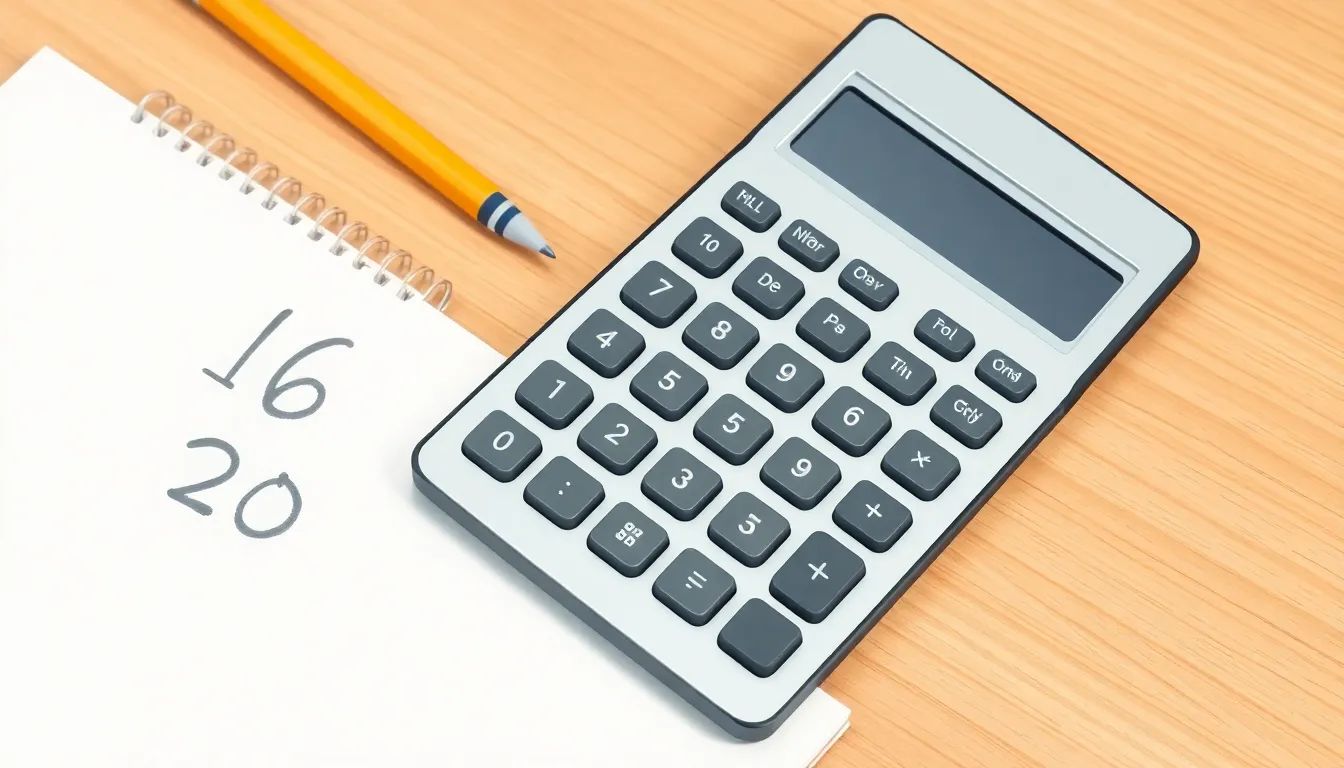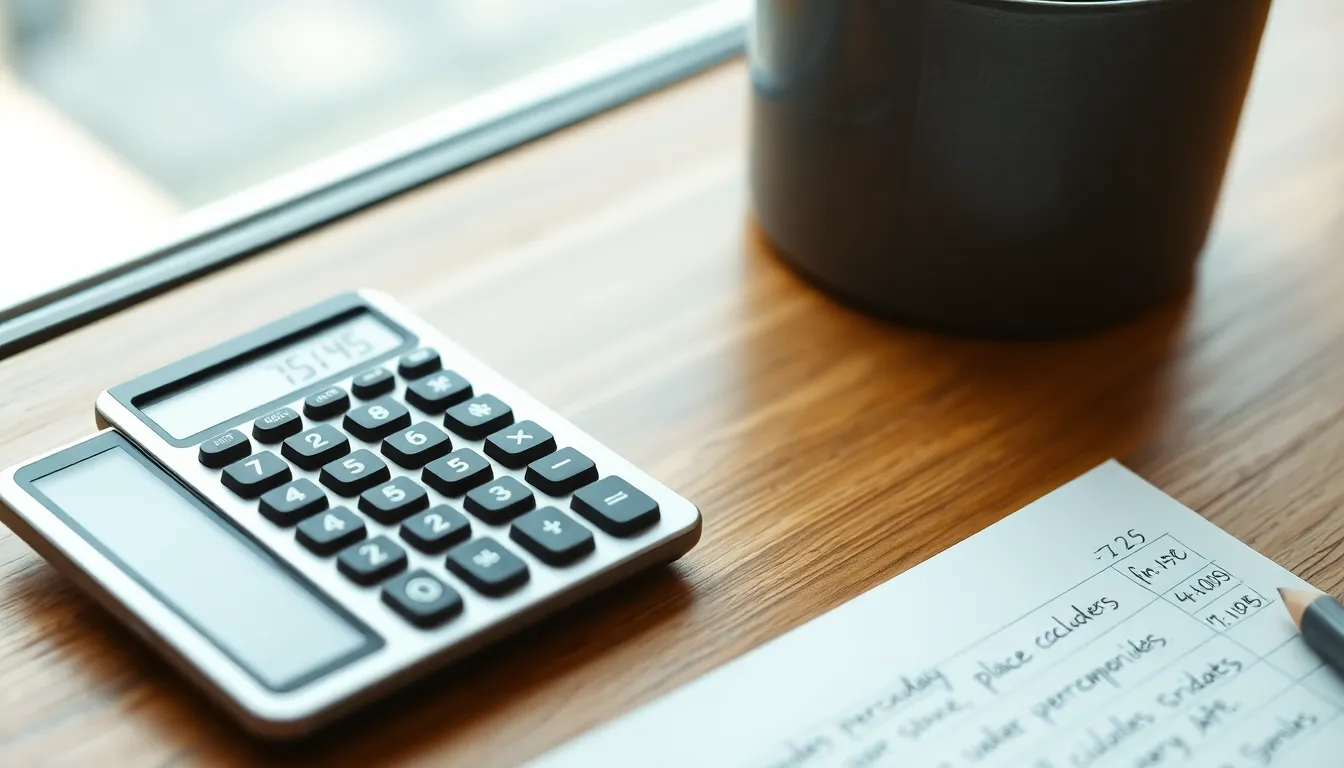Navigating percentages can feel like trying to solve a Rubik’s Cube blindfolded. But fear not! Today, we’re diving into the delightful world of numbers to answer a burning question: what percent is 16 of 20? Whether you’re crunching numbers for a school project or just impressing friends at trivia night, understanding this simple calculation can make you the star of the show.
Imagine you’re at a party, and someone brings up fractions and percentages. You’ll want to be ready with the answer that’ll have everyone nodding in agreement. Spoiler alert: it’s 80%! With just a little math magic, you’ll turn confusion into confidence. So let’s break it down and uncover the secrets of percentages together.
Table of Contents
ToggleUnderstanding Percentages
Calculating percentages involves understanding ratios. To find a percentage, divide the part by the whole and multiply by 100. For the question at hand, dividing 16 by 20 provides a straightforward way to start.
Take the fraction 16/20. This fraction represents the portion of the total. When simplified, 16/20 equals 0.8. Multiplying 0.8 by 100 yields 80. This result indicates that 16 is 80% of 20.
Many applications of percentages exist in everyday scenarios. In budgeting, for instance, knowing what percentage of income goes toward expenses is crucial. Similarly, in education, students often encounter percentages in grading systems, helping them understand their performance.
Calculating percentages also aids in comprehending discounts while shopping. If an item costs $20 and is 20% off, calculating the savings involves finding 20% of 20, which equals $4. Thus, the final price becomes $16, demonstrating practical use of percentages.
Mastering percentages fosters confidence in various tasks. Whether budgeting, shopping, or completing academic assignments, understanding percentages simplifies decision-making. As readers engage with this concept, clarity undoubtedly follows, making math more approachable.
To summarize, 16 is 80% of 20. Grasping this calculation lays a solid foundation for exploring further mathematical concepts involving percentages and their relevance in everyday life.
The Calculation Process


Understanding the calculation process for determining percentages is essential. This section details the necessary steps and formula to find what percent 16 is of 20.
Step-by-Step Breakdown
First, identify the part and the whole in this scenario. The part is 16 and the whole is 20. Next, divide the part by the whole. Performing this calculation, 16 divided by 20 results in 0.8. Finally, multiply this result by 100 to convert it into a percentage. Thus, 0.8 times 100 equals 80%. This clearly shows that 16 is 80% of 20.
Using the Formula
Using the percentage formula simplifies calculations. The formula can be articulated as (part/whole) times 100. In this case, substituting the values gives (16/20) times 100. This results in 0.8 times 100. The outcome, which is 80%, emphasizes that 16 represents 80% of 20. Employing this formula is beneficial for various calculations, emphasizing its practical utility.
Practical Applications
Understanding the concept of percentages opens doors to numerous practical applications in everyday life.
Real-Life Examples
In budgeting, individuals use percentages to allocate funds. For instance, if a person spends 20% of their income on groceries, they can quickly determine what that represents out of their total budget. During sales, discounts often appear in percentage format. A store promoting a 30% off sale becomes much clearer when shoppers realize that a $50 item costs them only $35 after applying the discount. Grading systems in schools frequently depend on percentages to assess student performance, helping educators communicate scores effectively.
Importance in Daily Life
Percentages play a critical role in many everyday decisions. In finance, people rely on percentage calculations to evaluate interest rates on loans. Understanding these rates allows for better financial planning. Health and fitness also use percentages; for example, calculating body fat percentage helps track personal health goals. Knowledge of percentages enhances decision-making skills. Individuals equipped with this mathematical understanding become more capable consumers in various situations, from shopping to investing.
Common Misconceptions
Many people mistakenly believe that calculating a percentage requires complex formulas. Understanding that the calculation involves a simple division followed by multiplication resolves this misconception.
Some individuals assume that knowing basic math skills is enough when it comes to percentages. In reality, context impacts how one applies those skills, especially in real-life situations like budgeting or shopping.
Another common fallacy involves confusing the terms “percentage” and “percentage point.” These terms indicate different concepts, with percentage points measuring the difference between two percentages.
Frequently, people think percentages apply only to academic subjects. In fact, percentages are relevant in various domains, including finance and health, connecting them to everyday decisions.
A widespread belief also suggests that percentages only represent discounts or sales. While these are popular applications, percentages extend to other areas such as grading systems and statistical analyses.
Sometimes, individuals calculate percentages using estimates rather than precise figures. Accurate calculations lead to better decision-making, especially in budgeting where every cent counts.
Many people overlook the importance of practice when mastering percentage calculations. Regular practice enhances familiarity and confidence, making the process more intuitive over time.
Additional misconceptions include believing that a higher percentage always signifies a better outcome. In some contexts, a lower percentage may be more favorable, such as interest rates on loans where lower values often indicate better terms.
Educators often note that students struggle with percent-related concepts. Comprehensive learning strategies can alleviate this issue, providing students with the necessary tools to understand these calculations better.




